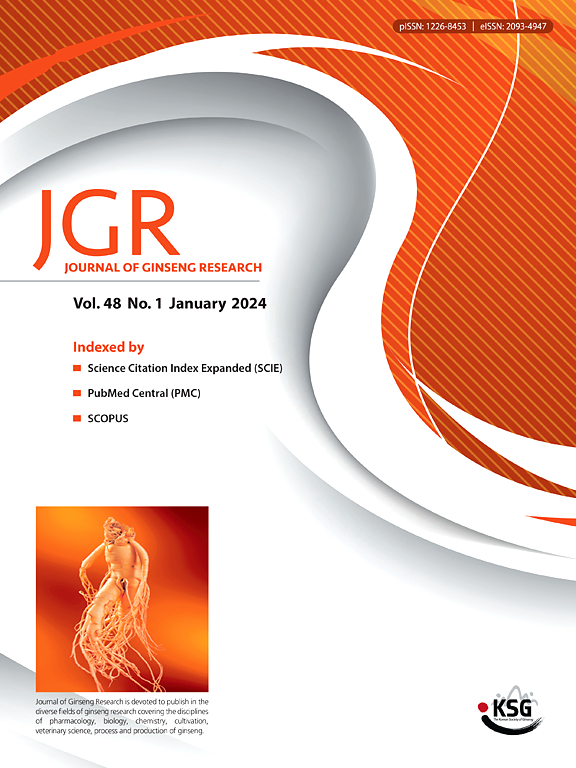Therapeutic potential of ginsenosides in circadian rhythm-based skin disorders
IF 5.6
2区 医学
Q1 CHEMISTRY, MEDICINAL
引用次数: 0
Abstract
The circadian rhythm, a biological system all living organisms possess, has become increasingly important as sleep patterns become more irregular. Circadian rhythms affect various cell types (fibroblasts, fat cells, muscles, etc.) and organs (the liver, pancreas, gut, etc.). This review focuses on the effects of the circadian rhythm on skin physiology. Under normal conditions, the circadian rhythm is involved in maintaining skin health, including DNA repair and wound healing. Disrupted circadian rhythm can cause skin disorders, including hyperpigmentation, melanoma, skin aging, sunburn, impaired wound healing, and an abnormal skin barrier.
Furthermore, the effects of ginsenosides, the primary bioactive component of Panax ginseng, were examined on recovery from skin disorders associated with circadian rhythm disruptions. Therefore, this review explains the relationship between skin physiology and circadian rhythm and suggests the potential of ginseng as a treatment for circadian rhythm-mediated skin disorders.

人参皂苷在基于昼夜节律的皮肤疾病中的治疗潜力
随着睡眠模式变得越来越不规律,所有生物体都拥有的生物系统——昼夜节律变得越来越重要。昼夜节律影响各种细胞类型(成纤维细胞、脂肪细胞、肌肉等)和器官(肝脏、胰腺、肠道等)。本文就昼夜节律对皮肤生理的影响作一综述。在正常情况下,昼夜节律参与维持皮肤健康,包括DNA修复和伤口愈合。昼夜节律紊乱可引起皮肤疾病,包括色素沉着、黑色素瘤、皮肤老化、晒伤、伤口愈合受损和皮肤屏障异常。此外,人参皂苷(人参的主要生物活性成分)对与昼夜节律中断相关的皮肤疾病的恢复进行了研究。因此,这篇综述解释了皮肤生理和昼夜节律之间的关系,并建议人参作为昼夜节律介导的皮肤疾病的治疗潜力。
本文章由计算机程序翻译,如有差异,请以英文原文为准。
求助全文
约1分钟内获得全文
求助全文
来源期刊

Journal of Ginseng Research
CHEMISTRY, MEDICINAL-INTEGRATIVE & COMPLEMENTARY MEDICINE
CiteScore
11.40
自引率
9.50%
发文量
111
审稿时长
6-12 weeks
期刊介绍:
Journal of Ginseng Research (JGR) is an official, open access journal of the Korean Society of Ginseng and is the only international journal publishing scholarly reports on ginseng research in the world. The journal is a bimonthly peer-reviewed publication featuring high-quality studies related to basic, pre-clinical, and clinical researches on ginseng to reflect recent progresses in ginseng research.
JGR publishes papers, either experimental or theoretical, that advance our understanding of ginseng science, including plant sciences, biology, chemistry, pharmacology, toxicology, pharmacokinetics, veterinary medicine, biochemistry, manufacture, and clinical study of ginseng since 1976. It also includes the new paradigm of integrative research, covering alternative medicinal approaches. Article types considered for publication include review articles, original research articles, and brief reports.
JGR helps researchers to understand mechanisms for traditional efficacy of ginseng and to put their clinical evidence together. It provides balanced information on basic science and clinical applications to researchers, manufacturers, practitioners, teachers, scholars, and medical doctors.
 求助内容:
求助内容: 应助结果提醒方式:
应助结果提醒方式:


